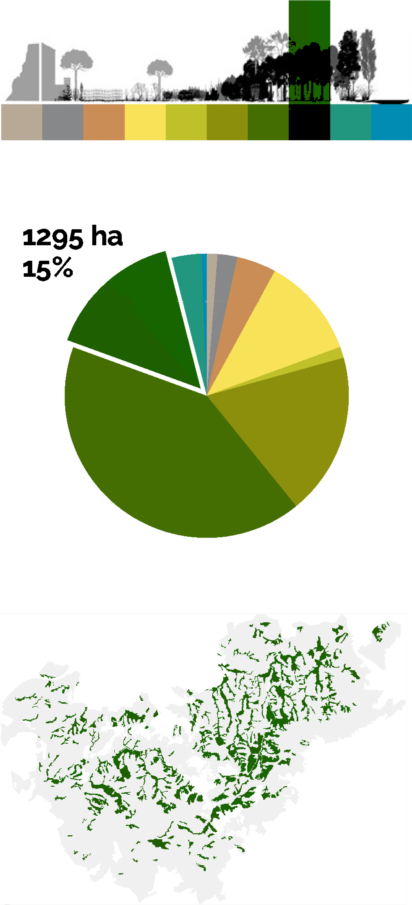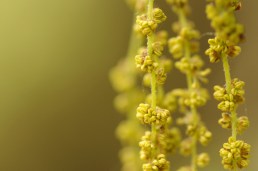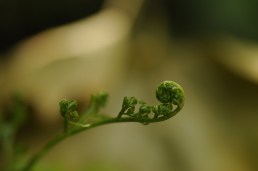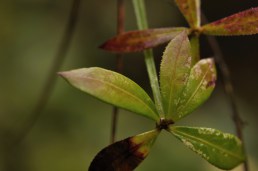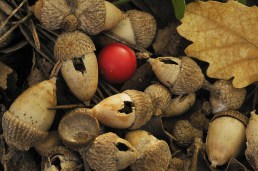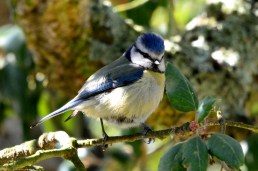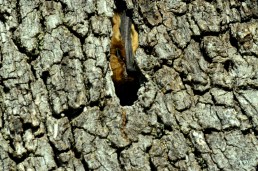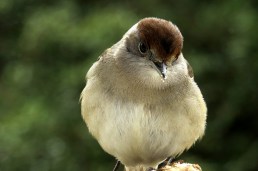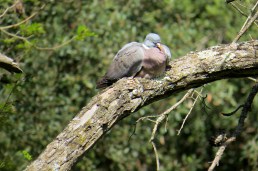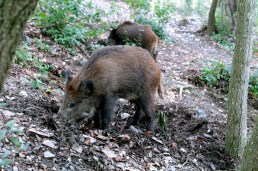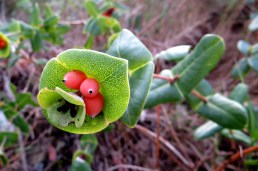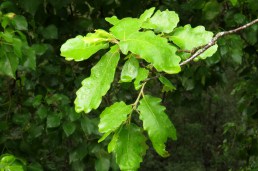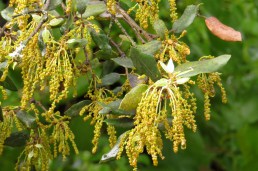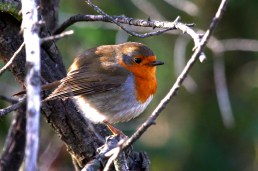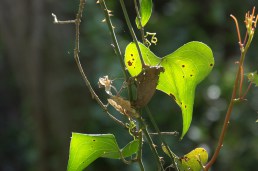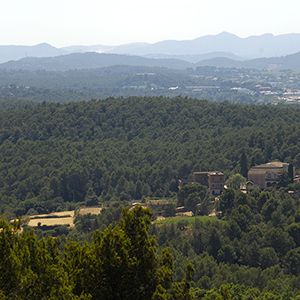Many of the holm oak woods in Collserola are in fact mixed woodland in which Aleppo pine (Pinus halepensis) predominates, with the occasional stone pine (Pinus pinea). Holm oak woodland with a high layer of pines is the most common type of wood in this chain of mountains. This mixed wood consisting of Aleppo pine and holm oak evolved naturally to become holm oak woodland without pines.
On the slopes of Puig d’Olorda and the shady area of the Vallvidrera gully, we find a well constituted wood consisting of holm oaks (Quercetum ilicis galloprovinciale) that matches the characteristic structure and composition of Mediterranean woodland. It is a sclerophyllous wood, meaning the leaves are hard, that is well adapted to the drought conditions that prevail in summer. The density of the branches prevents sunlight from filtering through to the ground, creating a shady, damp environment.
The predominant tree in the arboreal stratum is the holm oak (Quercus ilex), which is accompanied by the Quercus cerrioides species of oak and the occasional Aleppo pine (Pinus halepensis). Holm oak woodland is very dense and thick with creepers and evergreen shrubs.
We can identify a tall shrub stratum (1.5-3 m) consisting of shrubs as tall as trees, such as laurestine (Viburnum tinus), the Mediterranean buckthorn (Rhamnus alaternus), mock privet (Phillyrea latifolia), the strawberry tree (Arbutus unedo), etc., and a whole host of creeping and climbing plants such as convolvulus (Smilax aspera) and honeysuckle (Lonicera implexa), that grow so thickly they make the wood impenetrable.
In the lowest shrub stratum (0.5-1 m), we find butcher’s-broom (Ruscus aculeatus), grass asparagus (Asparagus acutifolius), common wild madder (Rubia peregrina) and ivy (Hedera helix), which carpets the ground or winds its way up trunks. So little light reaches the ground that the stratum of herbaceous plants cannot grow fully. Nevertheless, a small fern, maiden’s hair, does manage to survive (Asplenium adiantum-nigrum).
Holm oak wood with oak
In the damper, north-facing spots, halfway from the siliceous hollows and lowlands, the holm oak wood becomes richer, with species that tend towards the sub-Mediterranean, the most characteristic of which is the Quercus cerrioides species of oak (Quercus x cerrioides). It manages to create a dense forest community, a damp version of the holm oak woodland on the coast.
The holm oak and the oak are the dominant species in terms of density. They are accompanied by some magnificent Aleppo pines (Pinus halepensis). In the arboreal stratum, there are, albeit in very small numbers, other shade-loving species such as two varieties of the service tree (Sorbus domestica and Sorbus torminalis). This is a plant community of more Central European characteristics, a sub-association of the Mediterranean holm oak wood (Quercetum ilicis galloprovinciale Quercetosum cerrioides sub-association).
On a trail through the Font Groga Nature Reserve, we find all kinds of habitats, from well-preserved places with a mature woodland structure and thin undergrowth to areas that have been significantly altered due to clearances carried out under powerlines. These shrub communities consist in the main of laurestine (Viburnum tinus), shrubby hare’s-ear (Bupleurum fruticosum), heather (Erica arborea), the strawberry tree (Arbutus unedo) and assorted creepers and climbers.
One species that is of considerable interest in the context of this mountain chain and which lives in this sector is the holly (Ilex aquifolium), which is extremely rare but very useful for fauna as it bears fruit in winter. At a lower shrub level, we have species that like the cool, such as butcher’s-broom (Ruscus aculeatus) and daphne (Daphne laureola). There is also a notable presence of climbing plants: convolvulus (Smilax aspera), ivy (Hedera helix), clematis (Clematis vitalba) and honeysuckle (Lonicera implexa).
Lastly, in the herbaceous stratum, we find a whole host of plants typical of shady areas, such as common speedwell (Lithospermum purpureo-coeruleum), strawberry plants (Fragaria vesca), white violet (Viola alba) and saxifrage (Doronichum pardalianches), the species that inspired the logo of the Font Groga Nature Reserve. There are abundant ferns here, among them polypody (Polypodium vulgare) and the soft shield-fern (Polystichum setiferum), and various species of moss.




